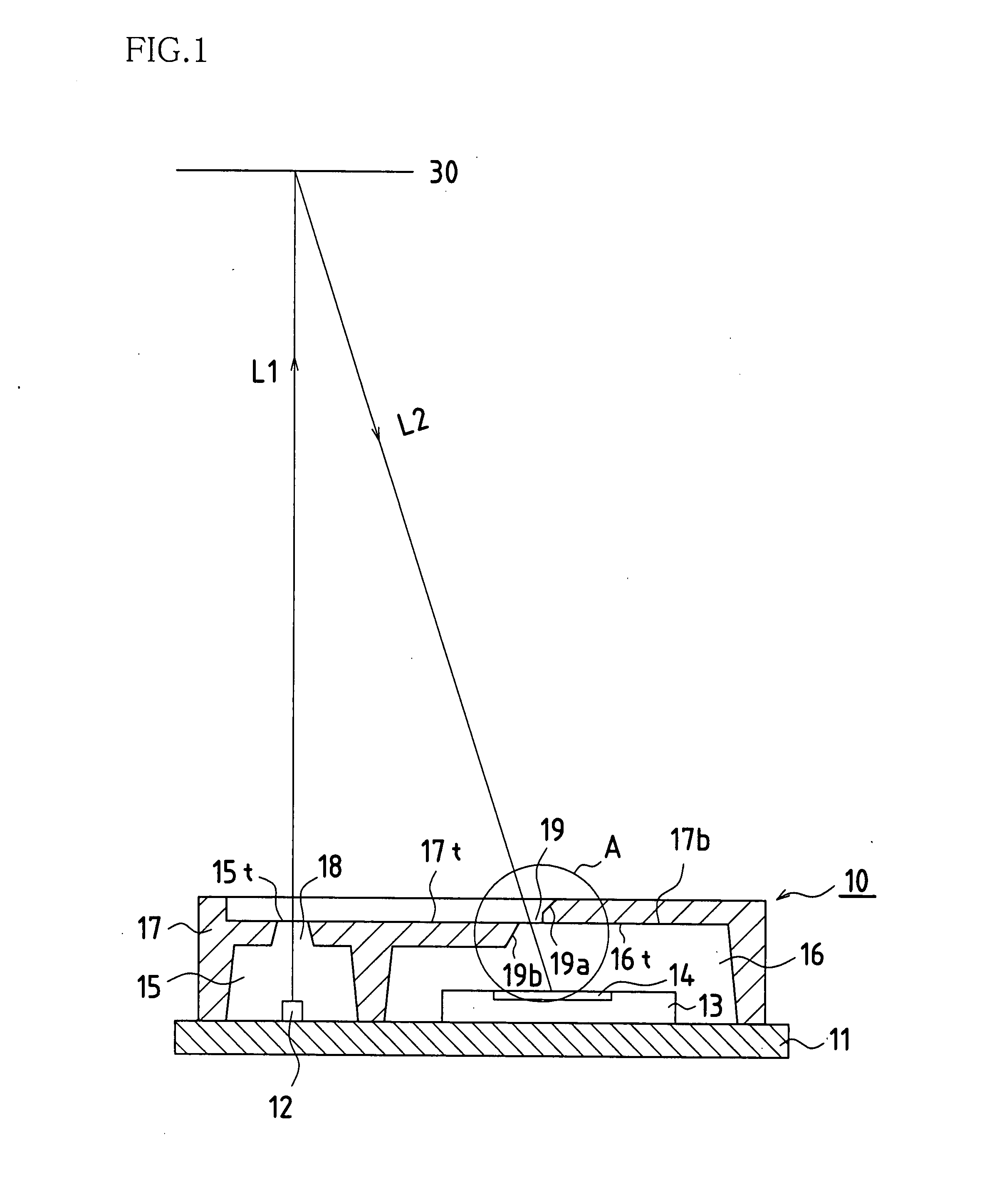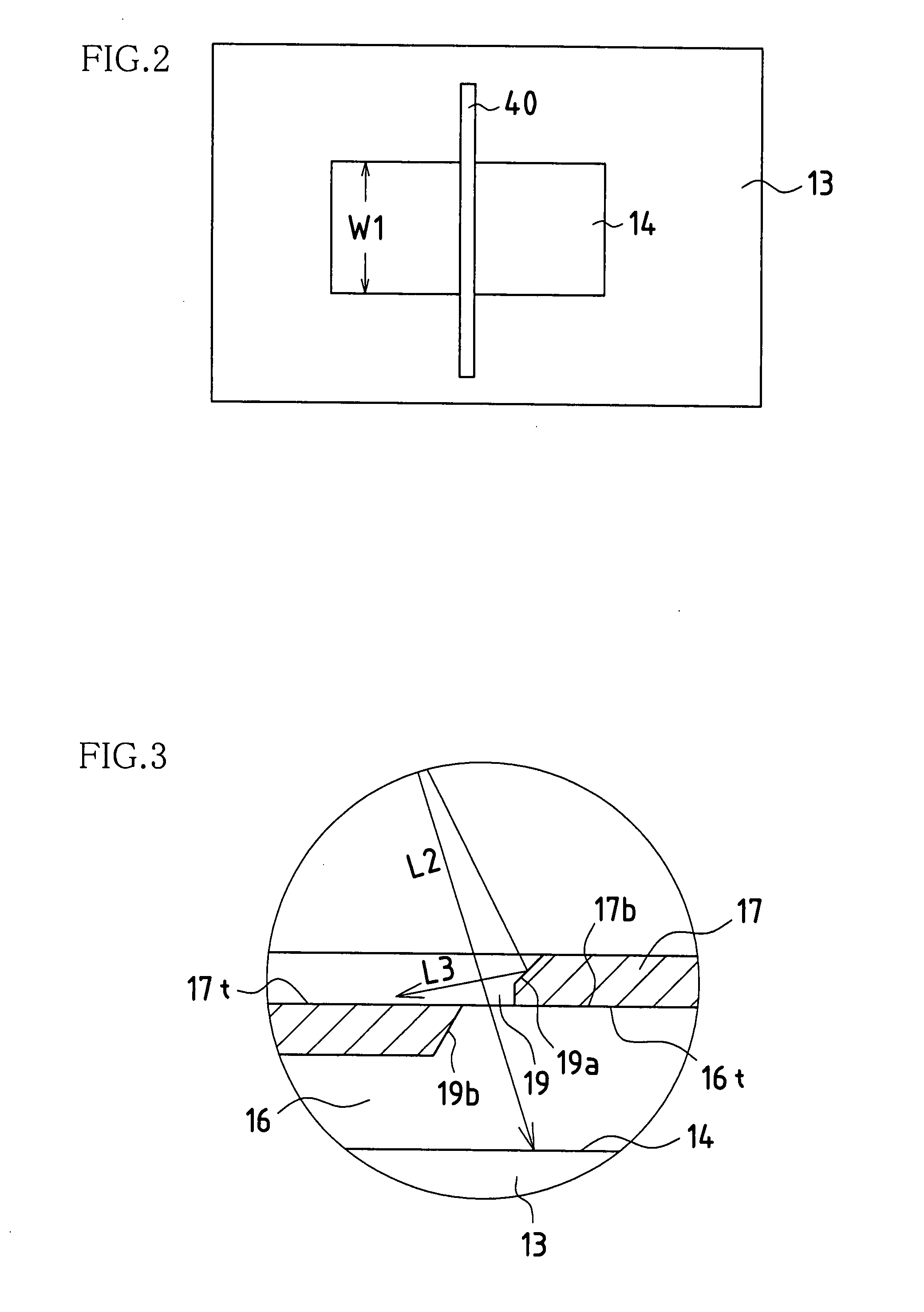Range-finding sensor, and electronic device equipped with range-finding sensor
a range-finding sensor and electronic device technology, applied in the field of range-finding sensors, can solve the problems of complex manufacturing process of range-finding sensors and the inability to accurately perform range-finding, and achieve the effect of reducing the size of an electronic devi
- Summary
- Abstract
- Description
- Claims
- Application Information
AI Technical Summary
Benefits of technology
Problems solved by technology
Method used
Image
Examples
first embodiment
[0053]FIG. 1 illustrates the structure of a range-finding sensor according to Embodiment 1 of the invention and a distance measuring principle thereof. A cross-sectional view of a range-finding sensor 10 is shown in FIG. 1. Hatching is omitted from the cross-section of a light-emitting element 12, a light-receiving element 13, and translucent resin sealing portions 15 and 16.
[0054]FIG. 2 is a plan view in which the light-receiving element portion in FIG. 1 is viewed from the side of a light-receiving portion slit, and illustrates a state in which light has been condensed on a light-receiving face of the light-receiving element. FIG. 3 is a partial enlarged view of portion A in FIG. 1, and illustrates a light path of reflected light reflected by a range-finding subject.
[0055]The range-finding sensor 10 according to the present embodiment is configured with a substrate 11, the light-emitting element 12 and the light-receiving element 13 disposed on the upper face (reference face) of t...
embodiment 2
[0077]An electronic device (not shown) according to the present embodiment is equipped with a range-finding sensor according to Embodiment 1. Because this electronic device is equipped with a small and highly precise range-finding sensor, the electronic device is small and has high precision.
PUM
 Login to View More
Login to View More Abstract
Description
Claims
Application Information
 Login to View More
Login to View More - R&D
- Intellectual Property
- Life Sciences
- Materials
- Tech Scout
- Unparalleled Data Quality
- Higher Quality Content
- 60% Fewer Hallucinations
Browse by: Latest US Patents, China's latest patents, Technical Efficacy Thesaurus, Application Domain, Technology Topic, Popular Technical Reports.
© 2025 PatSnap. All rights reserved.Legal|Privacy policy|Modern Slavery Act Transparency Statement|Sitemap|About US| Contact US: help@patsnap.com



